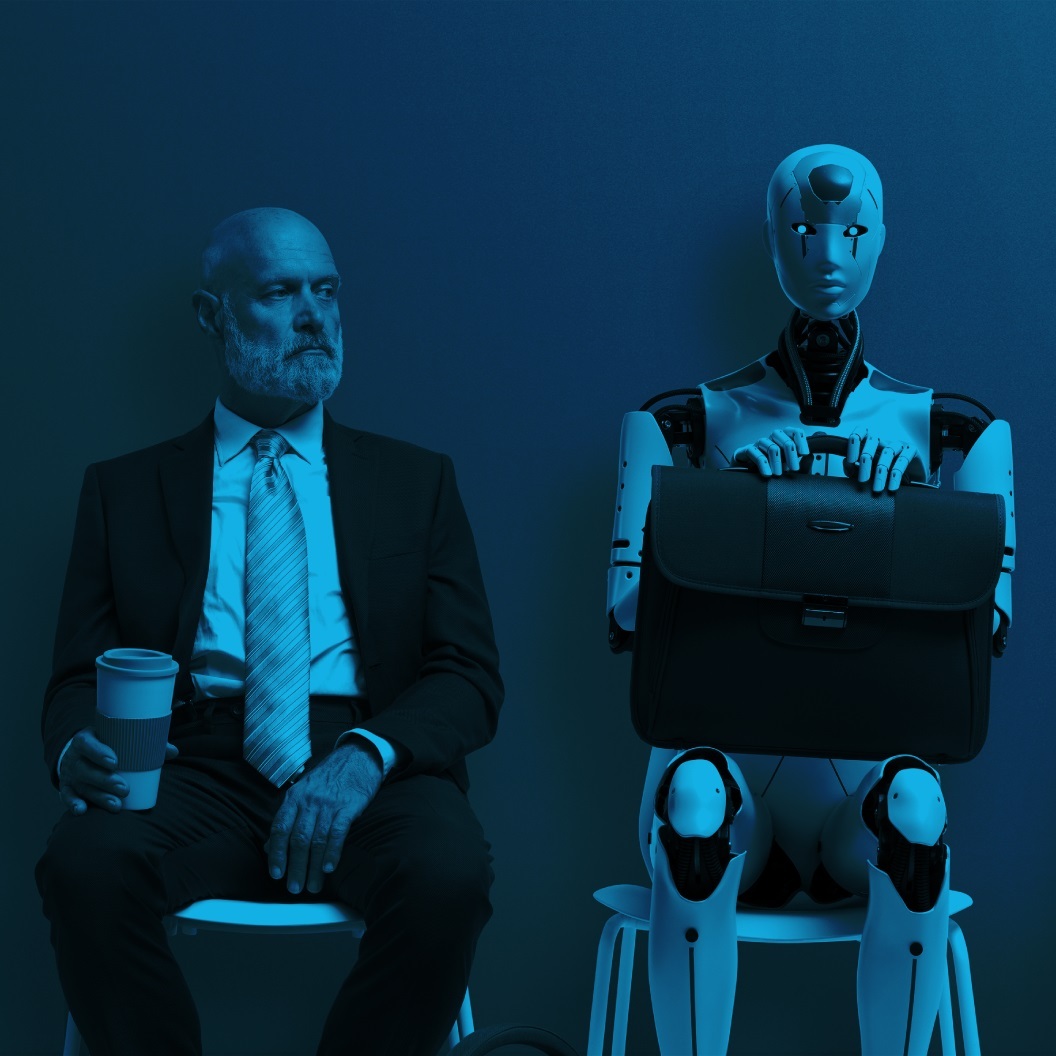AI and Business Strategy: Why culture matters
Many organisations still struggle turning AI adoption into long-term value - despite it being a strategic necessity. The real opportunity lies not in the tools themselves, but in how AI strengthens business strategy through people and culture. When treated as a force multiplier - enhancing decision-making, accelerating learning, and enabling adaptability - AI helps organisations realise their strategy more effectively.

In business, artificial Intelligence has moved from novelty to necessity. Gartner forecasts 70 % of enterprises will weave AI into core processes by 2026, yet many are struggling to capture any long-term strategic value from it.
The real challenge is not whether to adopt AI, but how to use it to strengthen business strategy without losing the human and cultural foundations that make strategy work. Too many initiatives begin with data scientists - before answering the deeper question: “How can AI enhance the way we design and deliver strategy - while keeping people and culture at the centre?”
Organisations that succeed are not starting with technology; they’re re-tuning the human system of strategy, culture, and ways of working. AI becomes a force multiplier - augmenting decision-making, accelerating learning, and enabling adaptability - rather than a replacement for judgment.
Grant Thornton UK are recognising this, investing in initiatives like their £1 million “Digital Literacy Academy” not just to train staff, but to instil a digital mindset that empowers their innovation strategy.
AI’s real power lies less in short-term efficiencies and more in how it accelerates learning and strategic adaptability. Its impact depends not only on technical readiness, but on how well people across the organisation understand, trust, and integrate it into their day-to-day workflows.
> RELATED ARTICLE: Strategy development vs Stategy implementation: 3 Differences
Why AI fails to take root
Before we look at the principles for success, it’s worth pausing on some of the common reasons organisations fail to leverage the true power of AI within the strategy process. These challenges show why cultural alignment is as critical to strategic impact as the technology itself.
Fragmented AI pilots with no shared, unified vision. Often internal teams run isolated experiments without clarity on how they connect to the long game. Without a vivid, organisation-wide picture of what “AI success” looks like and how it fits into the long-term strategic direction, shiny AI initiatives are tactical exercises instead of building blocks of transformation.
Short-term ROI focus. Treating AI purely as a cost-return calculation undervalues its roles as a strategic investment in future capability. AI learns, and it learns quickly, but the short termism that plagues so many companies and how they prioritise investment risks deploying AI for quick wins and missing out on compounded learning.
Skills Gaps vs Mindset Gaps. Many employees use AI tools in the background, or “shadow usage”, because there’s no clear encouragement, policy, or cultural support in the organisation. Organisations over-invest in technical upskilling and under-invest in psychological safety, leadership modelling, and cross-functional collaboration. AI adoption is just as much about trust, curiosity, and learning behaviour as it is about prompt engineering.
No clear understanding of where AI works and where it doesn’t. AI is often mistaken as the silver bullet, but in reality, its effectiveness is much more nuanced, and its competence uneven. For example, it is excellent generating content, synthesising information, and automation, but much weaker on multi step reasoning and accuracy when the stakes are high. Strategic implementation should align AI use with its strengths, but if leadership doesn’t understand this, it can lead to an erosion of trust that undermines execution.
Leadership misalignment and lack of accountability. AI initiatives stall because senior leaders see them as side projects rather than critical strategic levers. Without visible ownership at the executive level, AI becomes siloed, disconnected from business priorities, and judged on each individual pilot rather than its long-term value potential.
Driving positive cultural change: Start with principles, not prescriptions
In the fast-moving world of AI, where tools change faster than strategies can be rewritten, a principles-based approach matters. Cultural guardrails ensure AI adoption stays anchored to the long-term strategic plan and help organisations translate ambition into action, making both strategy development and strategic implementation more resilient and deliverable.
1. Always invite AI to the table
Inviting AI into existing strategy conversations is not just about improving analysis but about learning how it fits into existing strategic projects and priorities. AI should be seen as part of the dialogue, not an afterthought - helping leaders test, adapt, and refine priorities without taking ownership away from people. By bringing it into discussions on operations, customer interactions, risk, and day-to-day tasks, teams can see where it supports workflows, where it falls short, and how it interacts with established processes and culture.
The real task is not installing new systems but embedding an “always scanning, always testing” mindset into the existing strategic direction. This way, AI adoption grows out of the culture and workflows people know, making integration into company strategy natural and sustainable.
Embedding AI into strategy is as much about shifting norms (experimentation, openness, literacy) as it is about tools. Without cultural reinforcement, adoption stays fragmented and implementation falters.
2. Be the human in the loop
Human expertise is what gives AI its strategic value. When people own this process, expertise deepens, shared literacy grows, and behaviours evolve in line with strategic goals. Over time, this turns AI into a natural part of both strategy development and day-to-day execution. This comes from knowing in detail how your organisation works, how work is delivered, and with what inputs. Without this unique perspective, AI risks producing generic results and creating over-reliance. On its own, it is broad but shallow and is only powerful when paired with the proprietary human context and workflows unique to your organisation.
Embedding expertise into adoption supports how strategy is set and delivered, rather than pulling it of course. Each use of AI shows where it adds value, where it falls short, and how priorities may need to shift. When people own this process, expertise deepens, shared literacy grows, and behaviours evolve in line with strategic goals. Over time, this turns AI into a natural part of how strategy is developed and executed. It is culture, behaviours, and people that determine whether AI becomes a true capability for shaping and delivering strategy.
3. Plan for progress, not perfection
Success with AI depends less on chasing speed and more on building behaviours and frameworks that can flex as the technology improves. In this way, adaptability itself becomes a core strategic capability. You should assume next quarter’s AI tools will be stronger and quite possibly cheaper; therefore, design flexibility into core processes, avoiding getting stuck with one approach and staying ready to adjust as priorities change. Organisations that take this approach learn faster, switch at lower cost, and stay aligned with shifting strategy.
Make adaptability part of everyday work. Create AI champions within business teams, who test tools, share results, and lead by example. Build feedback loops that link team leads, analysts, and AI specialists to strategic goals: team leads drive adoption, analysts surface use cases that matter to the business, and AI specialists adapt tools to real needs. In this way, AI becomes integrally tied to the organisation’s long-term strategic direction.
4. Treat AI as a strategic enabler, not a replacement
AI is not here to replace the strategy process - it is a core capability that strengthens it. When viewed as an enabler, AI supports leaders in clarifying priorities, stress-testing choices, and accelerating execution.
Enablers are what translate intent into results. By embedding AI as a positive enabler of strategy, organisations keep people in control while using AI to amplify insight, adaptability, and delivery.
The organisations that embrace AI in this way don’t see it as external to the strategy process, but as a capability woven into it - helping realise and reinforce strategy at every stage.
Culture is the real AI capability for success
The long-term winners in AI strategic integration will not be those with the biggest models or most expensive tools, but those who get their people ready - through leadership, behavioural change, and cultural readiness. It is people and culture that determine whether AI becomes a true enabler of strategy, rather than just another set of tools.
Culture is the essential bridge between strategy designed on paper and strategy delivered in practice. The organisations that thrive will treat AI as a multiplier - embedding it into how strategy is shaped, tested, and executed - while keeping human judgment and trust at the core.
Those that do so will make AI a natural, normalised part of how strategy is set, how work gets done, and how it is embraced across all levels of the organisation. AI is no longer experimental; it is an everyday strategic enabler - powerful only when paired with the people and culture that give it meaning.


